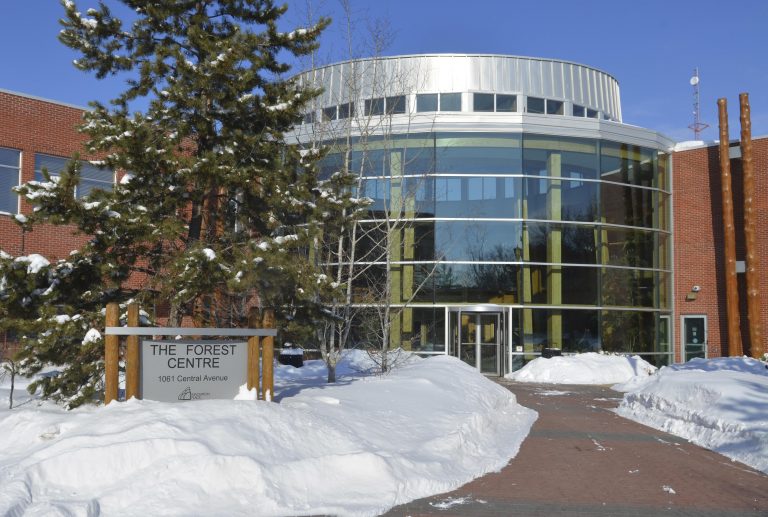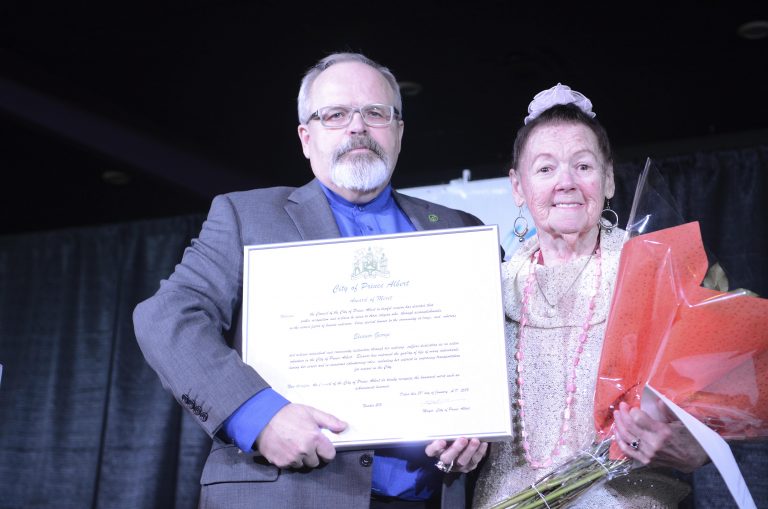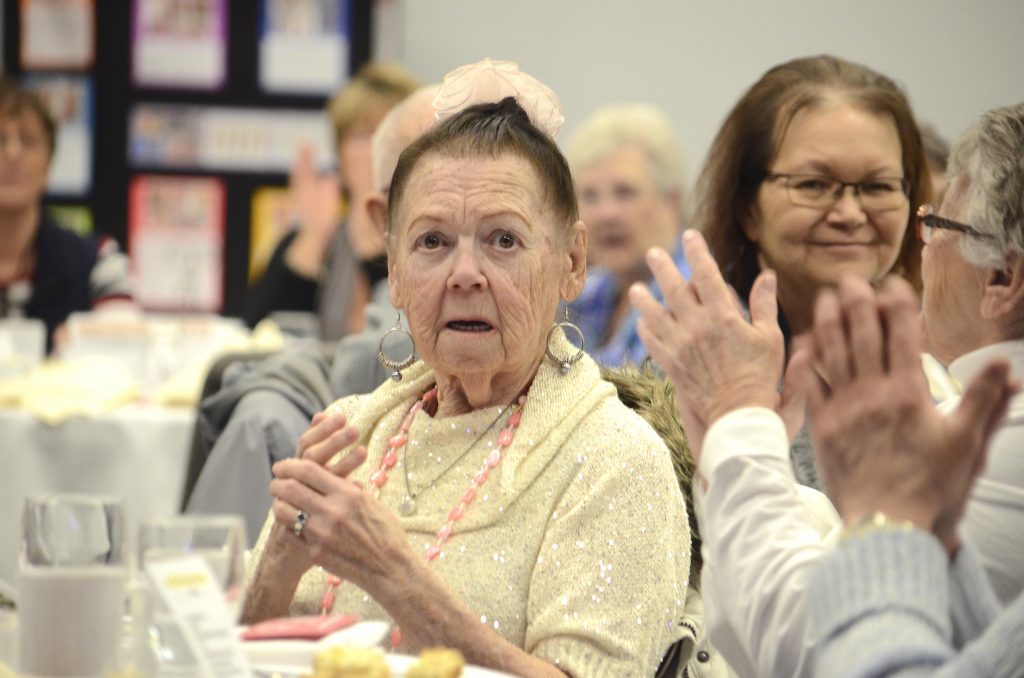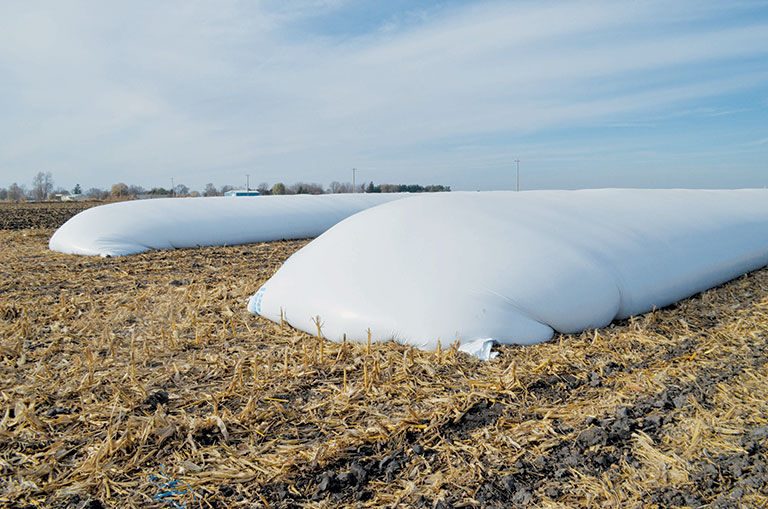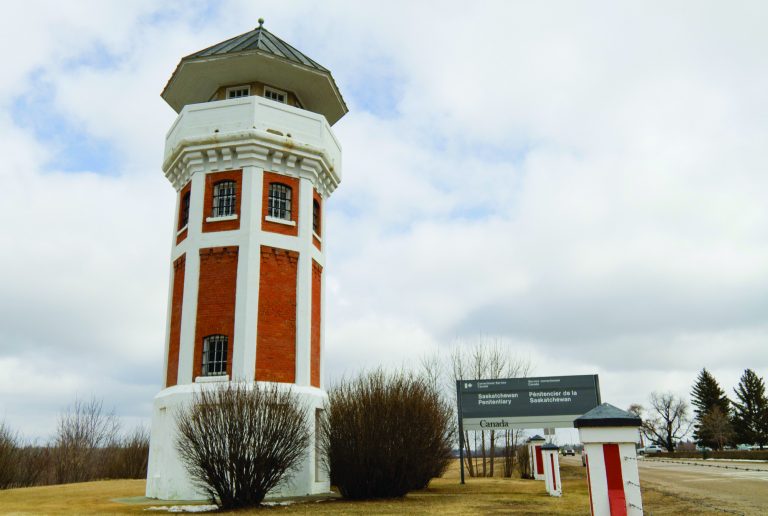Mary’s Wedding a poetic play, a love story and a war story, director says
The second show in Spark Theatre’s 2017-18 season couldn’t be more different than the first.
Macbeth featured a large cast, grand set design and carefully choreographed fight scenes.
The theatre company’s upcoming show, Mary’s Wedding, is much more intimate.
It features a tiny cast, just two people, jumping through time as they tell a love story set during the First World War.
“This is a play about a young man and young woman who fall in love and want to be together, but the war happens,” said director Roxanne Dicke.
“This is all Mary’s dream, so some of this stuff actually happens, but as he goes to war, she really starts to visit him in dreams and imagine what his world is like and their world could be like.”
Mary’s Wedding is written by Canadian playwright Stephen Massicotte, and has been performed across North America. It uses the metaphor of a storm to interweave the various stories and subplots in the play.
Staging the show this year, the 100th anniversary of the end of the First World War, brings extra significance to the already weighty subject matter.
“It’s poetic, it’s a Canadian play, it’s a love story, it’s a war story — it’s all of those things under one banner,” Dicke said.
“This production has been much more intimate than the massive battle scenes of Macbeth. We’ve brought it all forward; it’s being played close to the audience. I think it’s something people will fall into. It’s a beautiful piece.”
Certain people and events in the story are based on real people, with others based in fiction. Writer Massicotte did a lot of research ahead of writing the script.
With a small cast of just two people, finding the right actors with the right chemistry was crucial.
“You have to have believability in the relationship or the play just doesn’t work,” Dicke said.
“On top of that, it’s a very physical piece. We’re asking them to go into moments very quickly, very fluidly like a dream would be. It was crucial we had two very strong and capable actors that also connected with each other.”
Both the actors chosen are familiar faces for Prince Albert theatre fans.
The role of the title character, Mary, is being performed by Adreanna Boucher. Boucher is a regular with the Off the Cuff Improv troupe, and was cast as one of the witches in Macbeth.
Brodie Dransutavicius is a fight director and actor from Fort McMurray. This is his second play with Spark, as he battled Macbeth as Macduff earlier this theatre season.
Dransutavicius said he was “very thankful” for the opportunity to return to the E.A. Rawlinson Centre stage with Spark, and with Dicke, who directed him in Fort Mac. He praised the writing of Mary’s Wedding, and the choices Massicotte has provided the actors.
“The language itself is very intimate and poetic. It has its own arcs and flows to it, so finding a grounding to that is very difficult,” he said, adding that the most challenging part is the emotional weight of the show.
“The playwright leaves lots of these little caveats to pick up on if you want. It all depends on how you connect those dots. With this heavy material, you get this almost cathartic release from it because it has this depth to the writing.”
But making those choices requires making a lot of choices, and requires a co-star who can help navigate those choices.
“(Boucher) has been wonderful. She gives you a lot of choices to work with and as an actor that’s great because it allows me to navigate how I want to choose my tactics to approach a certain scene. Nothing ever falls stale, everything is always very fresh.”
Boucher herself also had good things to say about her on-stage chemistry with Dransutavicius. She didn’t get to share any stage time with the actor in their previous show together, but for this performance, they’ve built that actors’ connection.
“At the beginning, I was nervous. I thought he was fantastic, so I was excited about actually working with him,” she said.
“He’s great to work with.”
For Boucher, the role is something she can really get into.
“These are the kinds of roles I really love. I like comedy, but I love having a role I can really sink myself into,” she said.
“You have to dig deep for a role like this. It’s pretty emotional, but Mary is a real person, and this is a real relationship. You have to feel to make it believable for the audience.”
For Dicke, this play is a story about a journey, and one of the challenges for the cast is conveying the steps of that journey in a realistic way.
“Charlie is such a young man who goes to war, and he puts himself in harm’s way for the country, and for his believe that it’s what he needs and must do,” she said.
“He’s naïve. He goes off thinking this war will be an adventure. He thinks he’s going to make a huge difference, so it follows what he goes through.”
The play is also a milestone for Spark Theatre. So far, Spark is having a good year. More announcements about the future of Spark will be announced at the play and in the coming months.
“We’re putting P.A. on the map for theatre,” Dicke said. “I really want to emphasize that.”
Mary’s Wedding runs from March 22 to 24 at the Rawlinson Centre. Tickets are $32 for adults, $28 for seniors and $20 for students.
With the theme of the play, Dicke wants veterans and serving members of the military to feel welcome and honoured.
Military veterans and Legion members, as well as past and present members of the Canadian Armed Forces will be able to pay a special discounted price of $20 for their tickets to the show.





